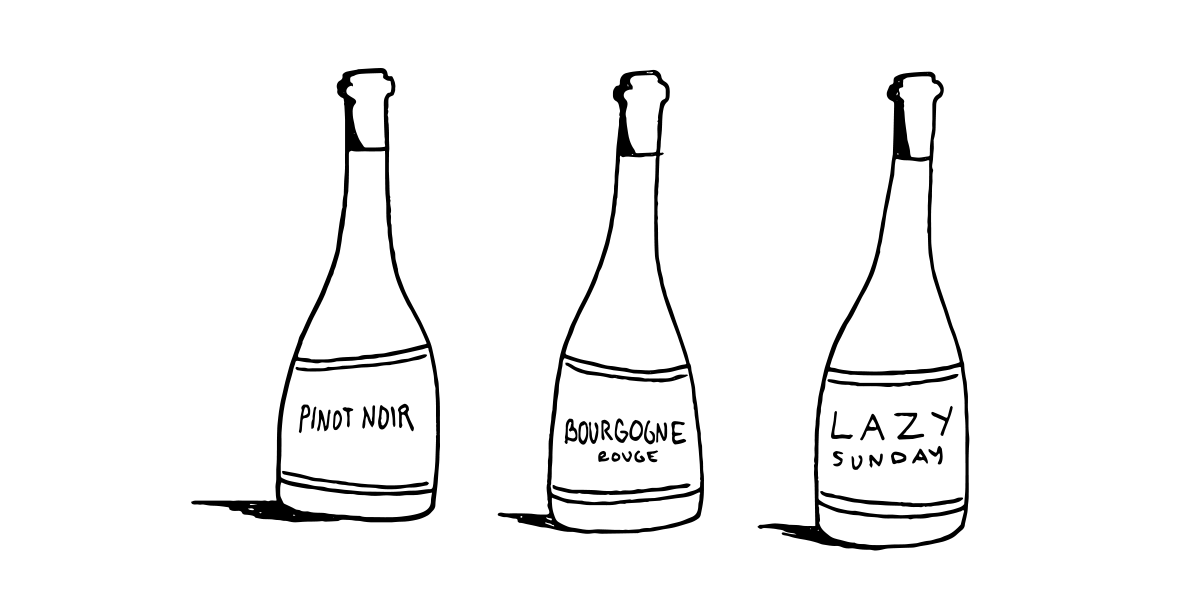Beyond winery, region, and vintage, what else should you look for on a wine label? Here are 3 tips on how to read a wine label.
The front label of a wine bottle doesn’t always give the same information. That’s because most wines use one of three different labeling methods:
- Wines labeled by grape variety.
- Bottle labels by region.
- Wines using a made-up or fantasy name.
Wines Labeled by Variety
Even though nearly all wine is from just one species (Vitis vinifera), there are thousands of different grape varieties (sometimes referred to as “cultivars”). Fortunately, if you’re new to wine, there are only about 100 common varieties that make up about 70% of what’s planted throughout the world.
If you’re curious to get a head start on tasting these popular wine varieties, check out this article on Noble Grapes →
Wines Labeled by Region
Wines like Bordeaux, Champagne, Chianti and Rioja are all named after the region in which they’re grown.
Each wine region dictates what grapes can be used in the regional wine. So, in order to know what’s inside one of these regionally labeled wines, you’ll want to do a little research. For example, Chablis in France grows Chardonnay, and Chianti in Italy specializes in Sangiovese.
Be sure to investigate our Regional Wines Guide for More →
Wines Labeled by Made-Up Name
More often than not, named wines are proprietary blends invented by the wine producer. It’s also not uncommon to find “named” wines in regions that do not allow the use of certain grapes in their regional wine. A great example of this is the wine called “Sassacaia” by Tenuta San Guido.
Tenuta San Guido is in Tuscany in a small and not very well known area called Bolgheri. The region requires the use of indigenous grapes in their wines which include Sangiovese. However, the producer decided to plant Cabernet Sauvignon and Cabernet Franc to make a “Bordeaux-style” blend. (So very un-Italian!)
Since the wine doesn’t use official grapes, it was “declassified” to the lowest regional wine (called Toscana IGT). Normally, this level of regional wine would be considered a cheap table wine. However, the producer took such care with the grapes and the wine that critics to notice! Today, it’s one of the most famous (and expensive) wines from Tuscany.
Be warned though, many wines with made-up names are cheap wines decorated with clever marketing. So, be sure to look up the wine’s technical sheets, if you’re serious about it!

